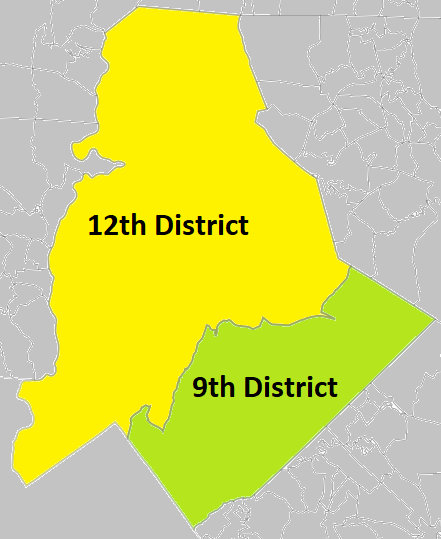I have seen that several of the congressional redistricting proposals posted in the North Carolina Senate Redistricting and Elections committee divide Mecklenburg three or four times. Would are such divisions justified?
To figure that out, we have to first understand some facts about the county’s population and how it is distributed. Mecklenburg County has a population of 1,115,482 in the 2020 census. Its largest municipality, Charlotte, has a population of 874,579. Congressional districts in North must have a population of 745,670 or 745,671, according to criteria adopted by the General Assembly, so neither Mecklenburg County nor Charlotte can be wholly contained in a single congressional district. Figure 1 shows Charlotte and other municipalities in Mecklenburg County.
Figure 1: Mecklenburg County municipalities. Source: Mecklenburg County government

So we know that Charlotte will be carved up in the current round of redistricting. The questions are how, and how much, Charlotte will be carved up. We will explore those questions in three maps
The 12th District represents most of Charlotte and Mecklenburg County in the current congressional map with the 9th District taking the so-called “Republican wedge” in southern Charlotte.
Mecklenburg County grew by 195,854 from 2010 to 2020, so map drawers will have to take a larger chunk of the county from the 12th district. There are three ways to do that.
The first is to include the northern part of Mecklenburg County with suburban areas to the west (I will assume that it would be the 1oth District, which currently includes Lincoln County). That will not be enough to balance district populations, so northern and western parts of Charlotte would also be peeled off the 12th District. That map is depicted in Figure 2.
Figure 2: Map with Mecklenburg County and Charlotte divided between the 10th and 12th districts

Aside from taking a large portion of Charlotte out of the 12th District, that map would double-bunk representatives Alma Adams and Dan Bishop, something that legislators are unlikely to do.
The next way to divide Mecklenburg County is to grow the current portion of the county in the 9th District to include the towns of Mint Hill and Mathews and a large portion of southeastern Charlotte. That map is depicted in Figure 3.
Figure 3: Map with Mecklenburg County and Charlotte divided between the 9th and 12th districts

That map would solve the problem of double-bunking Adams and Bishop, but a large portion of Charlotte would still have to be split from the 12th District while suburban areas to the north are included in it.
Map-drawers can keep Charlotte together to the maximum extent possible, but doing so would require that they split Mecklenburg County three ways, with the northern suburbs joining other suburbs in counties west of Charlotte in the 10th District. Mint Hill and Matthews would join the 9th District along with the portion of Charlotte that is already in the 9th. That map is depicted in Figure 4.
Figure 3: Map with Mecklenburg County divided between the 9th, 10th, and 12th districts. Charlotte is divided between the 9th and 12th.

While the criteria adopted by the General Assembly redistricting committees do not prohibit dividing counties more than once when drawing congressional districts, you could argue that it violates the spirit of the provision that counties divisions “shall only be made for reasons of equalizing population and consideration of double bunking.”
On the other hand, a three-way division of Mecklenburg County is more consistent with the redistricting criteria adopted by the General Assembly for considering municipal boundaries since it divides Charlotte less than a two-way division would. It would also be consistent with preserving communities of interest: who has a stronger community of interest claim for being in a district with central Charlotte, someone living in the town of Cornelius in northern Mecklenburg County, or someone living in southwestern Charlotte?
In short, there is no answer consistent with all redistricting criteria to the question of whether Mecklenburg County should be divided into two parts or three.
However, I see no justification for splitting Mecklenburg County four ways, especially if central Charlotte is split in the process.


